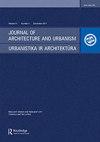高等教育校园规划分类
IF 0.8
0 ARCHITECTURE
引用次数: 1
摘要
本文旨在介绍和讨论高校校园规划设计的各个阶段。作者认为,考虑到规模、经济负担和对学习结果的影响,创建一个分类法来控制有利于学习的环境与布鲁姆所描述的教育具有同样的重要性。针对高校校园规划的分类,提出了一个具体的模型,分为四个有序的阶段:教育规划、空间规划、总体规划和详细设计。研究人员采用了四种方法来支持所提出的模型:通过文献综述来寻求先前研究中使用的相关知识和术语;提出的校园规划设计分类模型的描述性讨论对教育和校园规划方面的专家进行调查,以审查拟议的阶段;以及对巴林王国大学校园的案例研究,在那里实施了分类学的各个阶段。后一个案例研究进一步展示了如何根据最先进的教育需求和趋势开发执行校园规划过程。本文最后以高等学校校园规划的指导方针为例,用图表说明了所提出的分类模型的过程和模型领域,以及其阶段和规划过程的考虑因素。该模型还分析了根据从教育编程到详细设计阶段的流程流排序的领域之间的关系。本文章由计算机程序翻译,如有差异,请以英文原文为准。
TAXONOMY OF TERTIARY EDUCATION CAMPUS PLANNING
This paper aims to present and discuss phases of planning and designing campuses for Higher Education Institutions (HEIs). The authors argue that creating a taxonomy to control an environment conducive to learning is of the same order of importance as that for education as depicted by Bloom, given the size, financial burden, and influence on learning outcomes. A specific model is proposed for the taxonomy of planning campuses for HEIs with four ordered phases: educational programming, spaces programming, master planning, and detailed design. The researchers followed four methodologies to support the proposed model: A literature review to seek relevant knowledge and terms used in previous studies; a descriptive discussion of the proposed campus planning and design taxonomy model; a survey of experts in educational and campus planning to examine the proposed phases; and, a case study of the campus of Kingdom University in Bahrain where the phases of taxonomy were implemented. This latter case study further exhibits how the executed campus planning process is developed in adherence with state-of-the-art educational demands and trends. This paper is concluded with guidelines of HEIs campus planning as illustrated a diagram for the proposed model of taxonomy showing the process and illustrating the model domains, together with its phases and planning process considerations. The model also analyses the relationship between the domains that are ordered according to the process flow starting with educational programming up to the detailed design phases.
求助全文
通过发布文献求助,成功后即可免费获取论文全文。
去求助
来源期刊

Journal of Architecture and Urbanism
ARCHITECTURE-
CiteScore
1.30
自引率
14.30%
发文量
12
审稿时长
15 weeks
期刊介绍:
The Journal of Architecture and Urbanism publishes original research on all aspects of urban architecture.
 求助内容:
求助内容: 应助结果提醒方式:
应助结果提醒方式:


